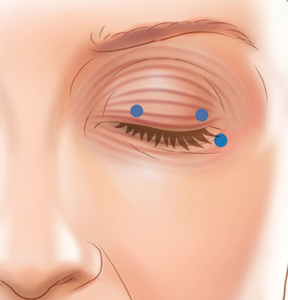
Blepharospasm
What is Blepharospasm?
Blepharospasm is a movement disorder characterized by abnormal involuntary contractions or spasms of the eyelid muscles, typically affecting people beginning in their 40s, 50s or 60s. This condition can cause repetitive blinking, eye twitching, and involuntary closure of the eyelids, which can interfere with a person’s vision, daily activities, and quality of life.
Blepharospasm can occur in one or both eyes and can range in severity from mild to severe. In severe cases, the spasms can be so intense that the eyes remain tightly closed for prolonged periods, making it impossible to see.
The exact cause of blepharospasm is not fully understood, but it is thought to be related to a malfunction in the basal ganglia, an area of the brain that is involved in controlling movement. Blepharospasm may also be associated with certain medications, neurological disorders, or genetic factors.
Symptoms of Blepharospasm

The initial symptoms may feel like squinting, eyelid heaviness, pain or tension around the eyes. If untreated, vision function can be affected simply because the eye closure interferes with vision (not because the condition affects the eyes themselves). Once treated, vision is entirely normal.
Triggers can include reading, walking, computer use and driving, which can be dangerous from a safety perspective, not to mention disruptive to the patient’s quality of life or even work-related activities. When blepharospasm is associated with lower facial dystonia, it is known as Meige syndrome.
Causes, Diagnosis and Treatment
There is no known cure for blepharospasm, but treatment options are available to manage symptoms and improve quality of life. Botulinum toxin injections, commonly known as Botox, can be used to temporarily paralyze the affected muscles and reduce the severity of the spasms. Other treatments may include oral medications, such as muscle relaxants or anticonvulsants, or surgical procedures to remove or alter the affected muscles.
Blepharospasm is diagnosed based on the clinical exam and is easily treated with injection of botulinum toxin (Botox or Xeomin). Botulinum toxin injections work by disrupting the communication between nerve and muscle, thereby relaxing the overactive muscles that cause blepharospasm. The treatment may take 3-10 days to kick in and typically lasts about 3 months, requiring repeat injection 3-4 times per year. The main side effects to be aware of are the possibility of weakness of eyelid closure, dry eye, eye tearing, with very rare possibility of eyelid droop or double vision. That being said, Botox is very safe and effective for blepharospasm and can be life-changing for patients, especially those who have gone undiagnosed for a while.
